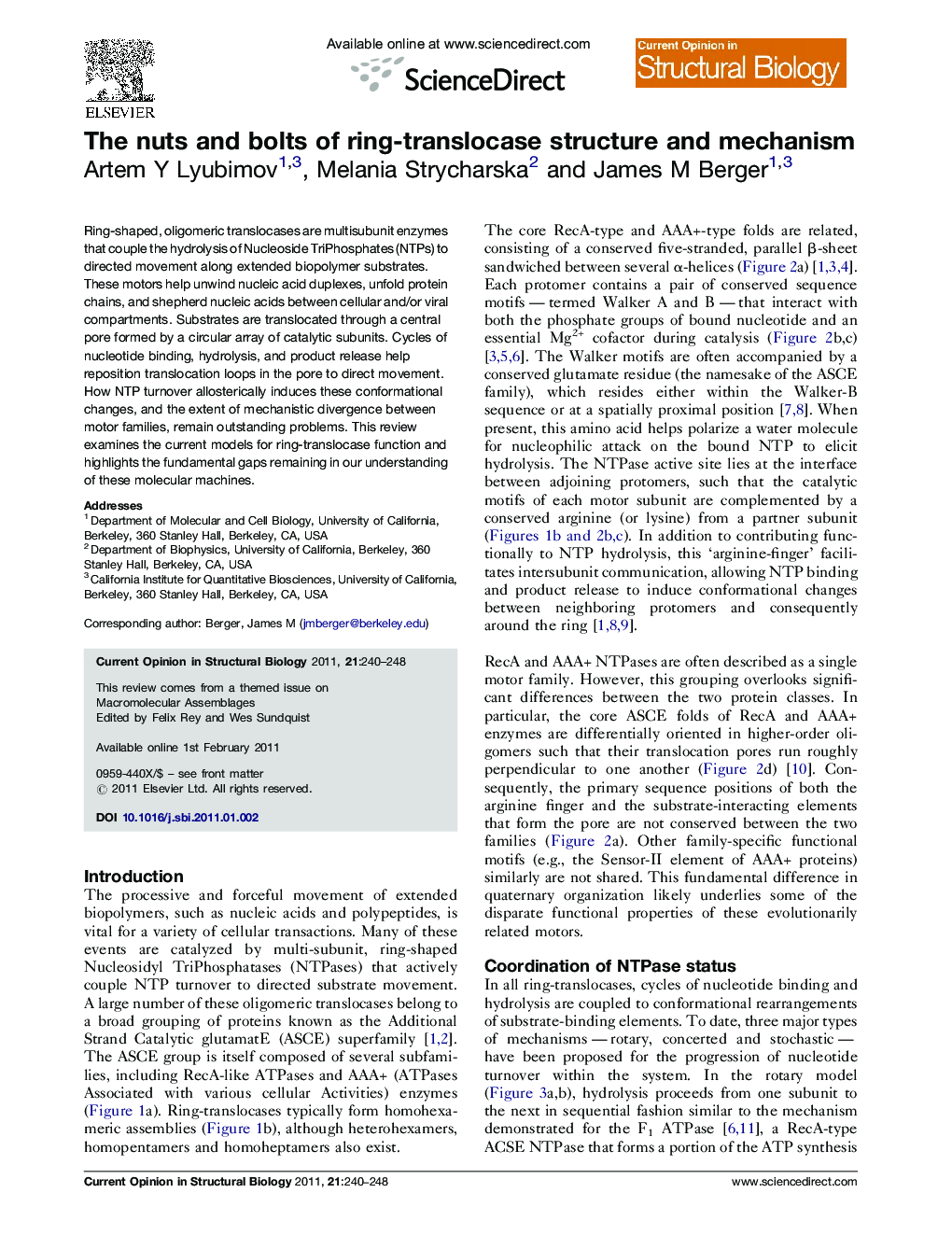| کد مقاله | کد نشریه | سال انتشار | مقاله انگلیسی | نسخه تمام متن |
|---|---|---|---|---|
| 1979443 | 1061680 | 2011 | 9 صفحه PDF | دانلود رایگان |

Ring-shaped, oligomeric translocases are multisubunit enzymes that couple the hydrolysis of Nucleoside TriPhosphates (NTPs) to directed movement along extended biopolymer substrates. These motors help unwind nucleic acid duplexes, unfold protein chains, and shepherd nucleic acids between cellular and/or viral compartments. Substrates are translocated through a central pore formed by a circular array of catalytic subunits. Cycles of nucleotide binding, hydrolysis, and product release help reposition translocation loops in the pore to direct movement. How NTP turnover allosterically induces these conformational changes, and the extent of mechanistic divergence between motor families, remain outstanding problems. This review examines the current models for ring-translocase function and highlights the fundamental gaps remaining in our understanding of these molecular machines.
Research highlights
► Ring-shaped translocases move biological polymers such as nucleic acids or proteins.
► Cycles of ATP hydrolysis power substrate movement through an interior pore.
► Most, if not all, ring-translocases appear to use a sequential rotary ATPase cycle.
► Inverting subunit firing order or substrate orientation alters motor direction.
Journal: Current Opinion in Structural Biology - Volume 21, Issue 2, April 2011, Pages 240–248